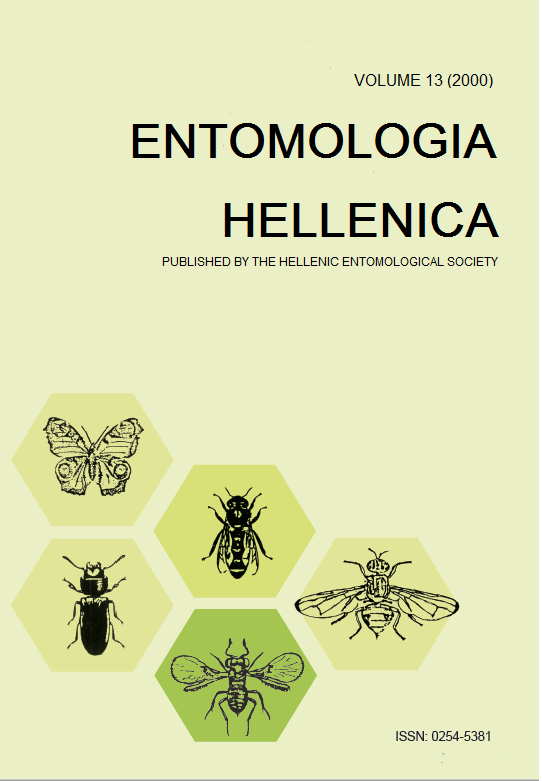Η εξαπόλυση του αρπακτικού Nesidiocoris tenuis (Hemiptera: Miridae) στο φυτώριο βοήθησε στην πιο γρήγορη εγκατάστασή του σε καλλιέργεια υπαίθριας τομάτας
Περίληψη
Ο εχθρός της τομάτας, Tuta absoluta (Meyrick) (Lepidoptera: Gelechiidae) που εισέβαλε στη χώρα μας, πολύ σύντομα έγινε σημαντικός εχθρός τόσο των υπαίθριων όσο και των θερμοκηπιακών καλλιεργειών. Η εξαπόλυση του αρπακτικού Nesidiocoris tenuis (Reuter) (Heteroptera: Miridae) στο φυτώριο έχει βρεθεί ότι μπορεί να συμβάλει στην αντιμετώπιση του T. absoluta σε καλλιέργειες τομάτας στο θερμοκήπιο. Ο στόχος της παρούσας μελέτης είναι να αξιολογηθεί κατά πόσο σε υπαίθρια καλλιέργεια τομάτας, η εξαπόλυση του N. Tenuis στο φυτώριο μπορεί να συμβάλει στην έγκαιρη εγκατάστασή του. Συμπερασματικά, η εξαπόλυση του N. tenuis συνέβαλε ουσιαστικά στην έγκαιρη αποίκηση της καλλιέργειας σε σύγκριση με τα τεμάχια του μάρτυρα. Επίσης, ο ρόλος του ιθαγενούς πληθυσμού του M. pygmaeus πρέπει να λαμβάνεται σοβαρά υπόψη στα προγράμματα ολοκληρωμένης αντιμετώπισης. Η μέθοδος αυτή είναι αποτελεσματική στην πιο έγκαιρη εγκατάσταση του N. tenuis και θα πρέπει να αξιολογηθεί περαιτέρω η συμβολή της στην αντιμετώπιση του Τ. absoluta.
Λεπτομέρειες άρθρου
- Πώς να δημιουργήσετε Αναφορές
-
Perdikis, D. C., Arvaniti, K. A., Paraskevopoulos, A., & Grigoriou, A. (2015). Η εξαπόλυση του αρπακτικού Nesidiocoris tenuis (Hemiptera: Miridae) στο φυτώριο βοήθησε στην πιο γρήγορη εγκατάστασή του σε καλλιέργεια υπαίθριας τομάτας. ENTOMOLOGIA HELLENICA, 24(1), 11–21. https://doi.org/10.12681/eh.11541
- Τεύχος
- Τόμ. 24 Αρ. 1 (2015)
- Ενότητα
- Articles

Αυτή η εργασία είναι αδειοδοτημένη υπό το CC Αναφορά Δημιουργού – Μη Εμπορική Χρήση – Παρόμοια Διανομή 4.0.
Authors who publish with this journal agree to the following terms:
Authors retain copyright and grant the journal right of first publication with the work simultaneously licensed under a Creative Commons 4.0 license.
Authors are able to enter into separate, additional contractual arrangements for the non-exclusive distribution of the journal's published version of the work (e.g. post it to an institutional repository or publish it in a book), with an acknowledgement of its initial publication in this journal. Authors are permitted and encouraged to post their work online (preferably in institutional repositories or on their website) prior to and during the submission process, as it can lead to productive exchanges, as well as earlier and greater citation of published work.






